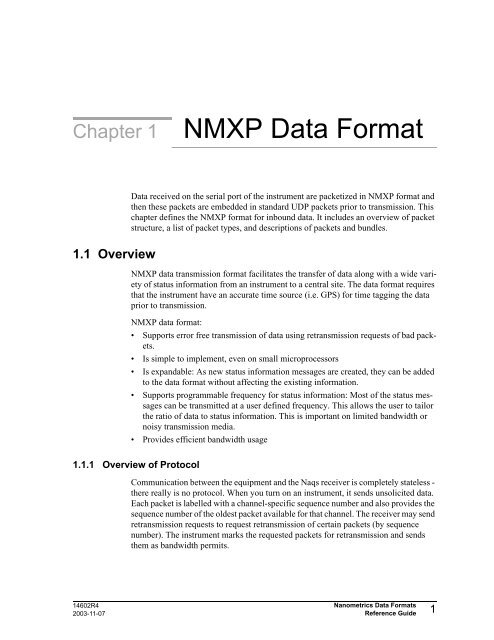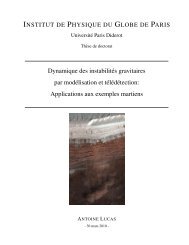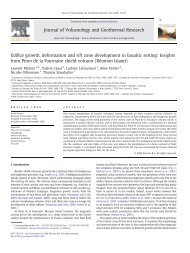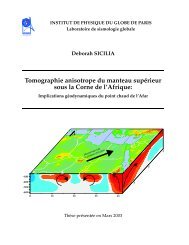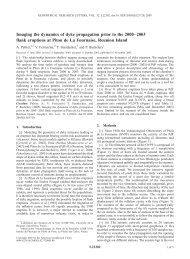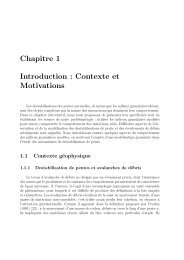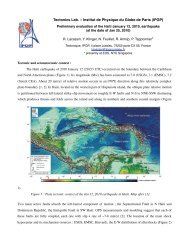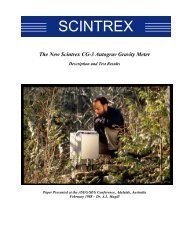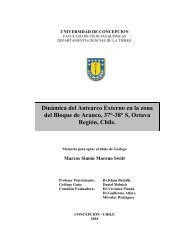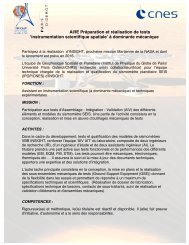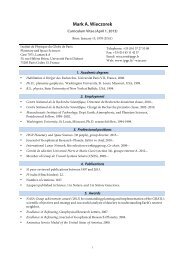Nanometrics Data Formats Reference Guide
Nanometrics Data Formats Reference Guide
Nanometrics Data Formats Reference Guide
Create successful ePaper yourself
Turn your PDF publications into a flip-book with our unique Google optimized e-Paper software.
Chapter 1<br />
NMXP <strong>Data</strong> Format<br />
1.1 Overview<br />
<strong>Data</strong> received on the serial port of the instrument are packetized in NMXP format and<br />
then these packets are embedded in standard UDP packets prior to transmission. This<br />
chapter defines the NMXP format for inbound data. It includes an overview of packet<br />
structure, a list of packet types, and descriptions of packets and bundles.<br />
NMXP data transmission format facilitates the transfer of data along with a wide variety<br />
of status information from an instrument to a central site. The data format requires<br />
that the instrument have an accurate time source (i.e. GPS) for time tagging the data<br />
prior to transmission.<br />
NMXP data format:<br />
• Supports error free transmission of data using retransmission requests of bad packets.<br />
• Is simple to implement, even on small microprocessors<br />
• Is expandable: As new status information messages are created, they can be added<br />
to the data format without affecting the existing information.<br />
• Supports programmable frequency for status information: Most of the status messages<br />
can be transmitted at a user defined frequency. This allows the user to tailor<br />
the ratio of data to status information. This is important on limited bandwidth or<br />
noisy transmission media.<br />
• Provides efficient bandwidth usage<br />
1.1.1 Overview of Protocol<br />
Communication between the equipment and the Naqs receiver is completely stateless -<br />
there really is no protocol. When you turn on an instrument, it sends unsolicited data.<br />
Each packet is labelled with a channel-specific sequence number and also provides the<br />
sequence number of the oldest packet available for that channel. The receiver may send<br />
retransmission requests to request retransmission of certain packets (by sequence<br />
number). The instrument marks the requested packets for retransmission and sends<br />
them as bandwidth permits.<br />
14602R4<br />
<strong>Nanometrics</strong> <strong>Data</strong> <strong>Formats</strong><br />
2003-11-07 <strong>Reference</strong> <strong>Guide</strong><br />
1


